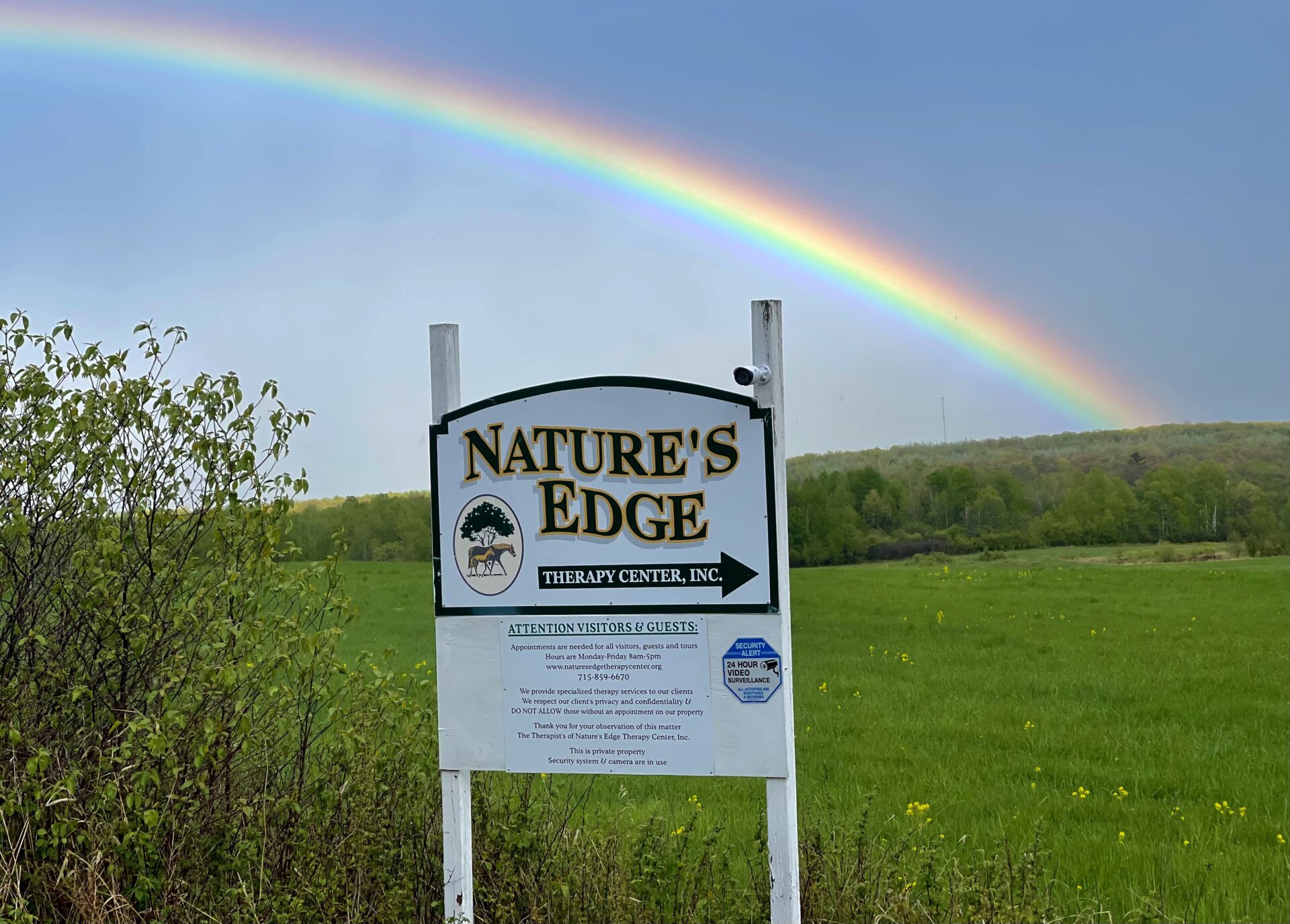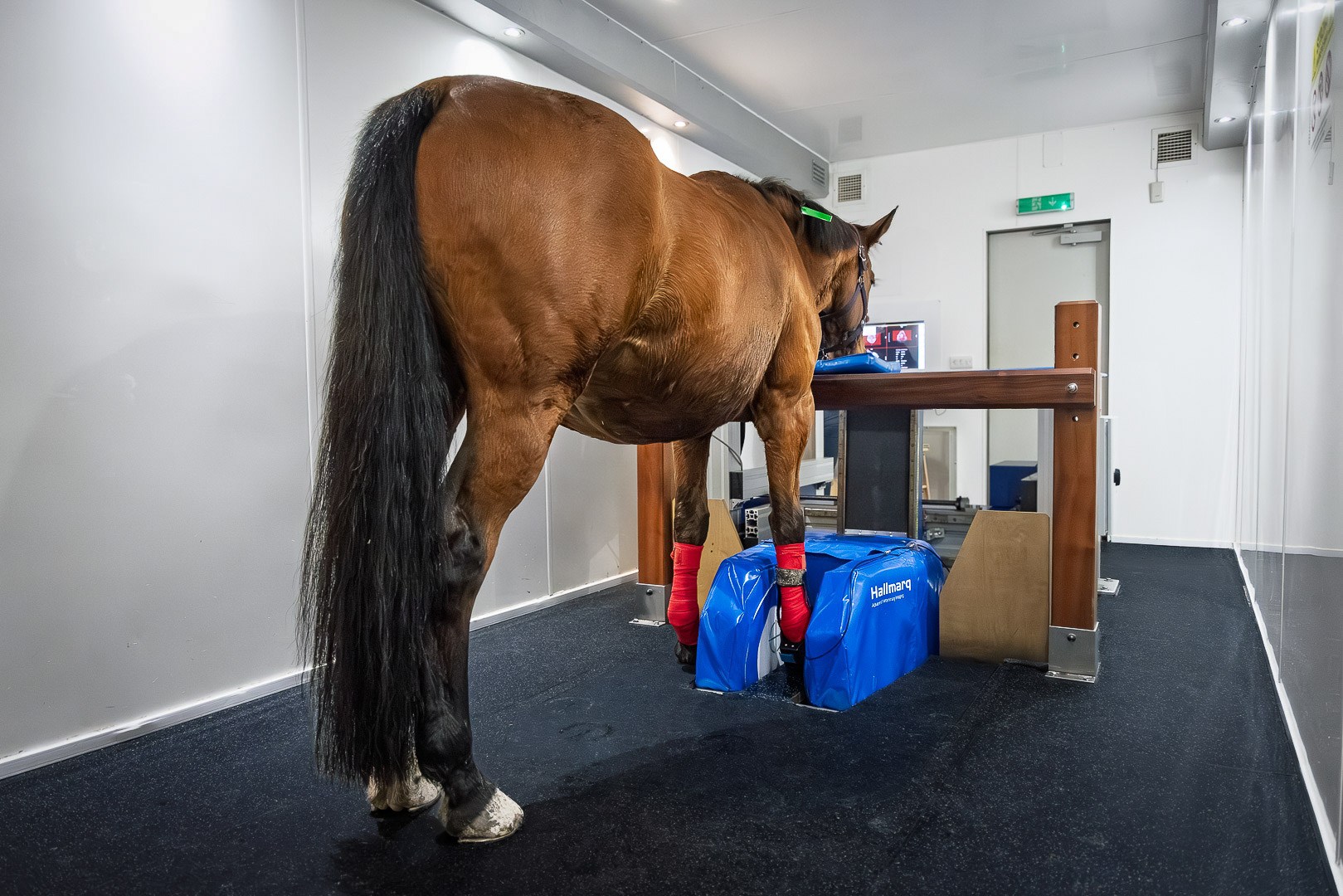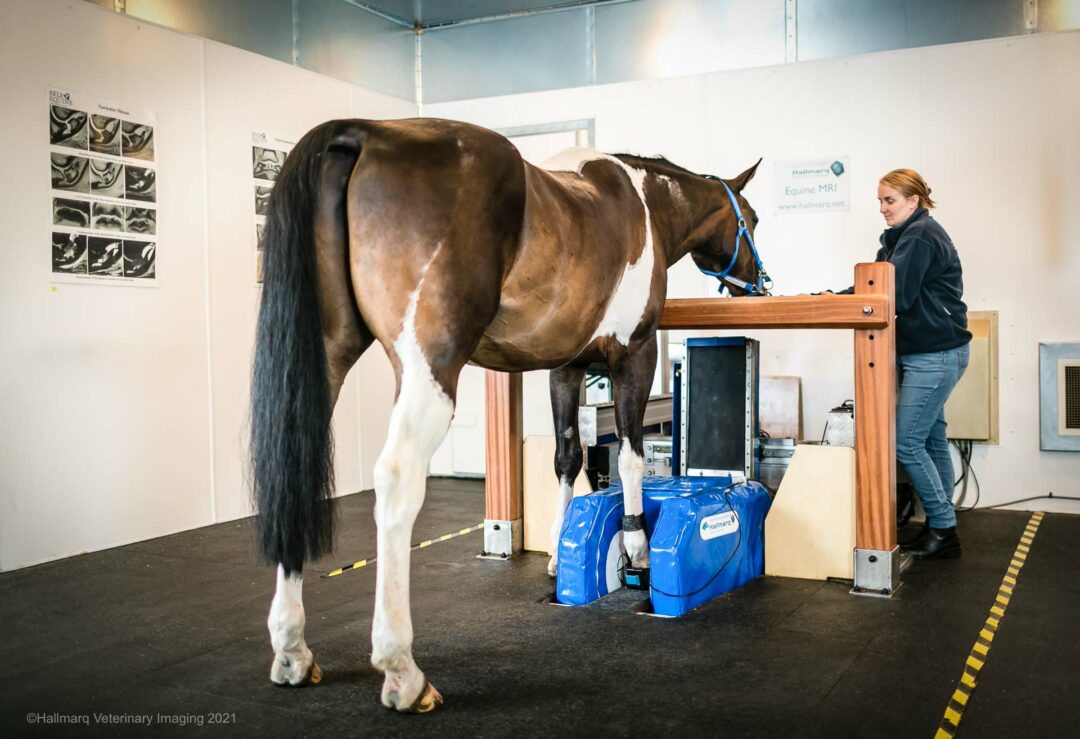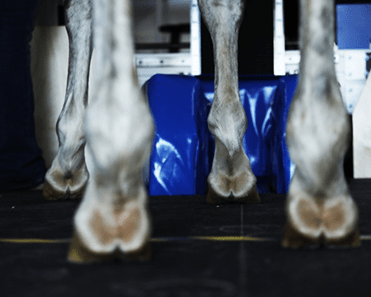At Hallmarq, our mission is clear: “Improving the lives of animals and those who care for them.” This commitment guides everything we do, from developing cutting-edge advanced imaging solutions to supporting the veterinary communities that rely on them. It’s also what made it an easy decision to step in and help a very special therapy horse named Belle.
Belle: a key therapy partner at Nature’s Edge
Belle is a 7-year-old, 15.3-hand registered Quarter Horse with a gentle temperament and a vital role at Nature’s Edge Therapy Center. Located on a 65-acre working ranch in Wisconsin, Nature’s Edge is one of the few facilities in the U.S. that provides medically prescribed therapy integrating hippotherapy. The approach uses the multidimensional movement of horses as part of physical, occupational, and speech-language therapy. However, unlike therapeutic riding, hippotherapy is a clinical intervention performed by licensed therapists under a physician’s order.
Hippotherapy and the role of the horse
Hippotherapy was first introduced to the US in 1992. The term hippotherapy refers to how occupational therapy, physical therapy and speech-language pathology professionals use evidence-based practice and clinical reasoning in the purposeful manipulation of equine movement. As a therapy tool, it engages sensory, neuromotor and cognitive systems to promote functional outcomes. Recognized by the American Medical Association (AMA) as a complementary therapeutic modality, hippotherapy offers powerful benefits to individuals with a range of physical and neurological challenges.
But what makes it so effective is the human-animal bond; it all starts with the horse’s movement. Horses share a similar pelvic structure to humans. However, their longer stride engages the rider in three planes of movement – forward and back, side to side, and rotationally – up to 3,000 steps in just 30 minutes.
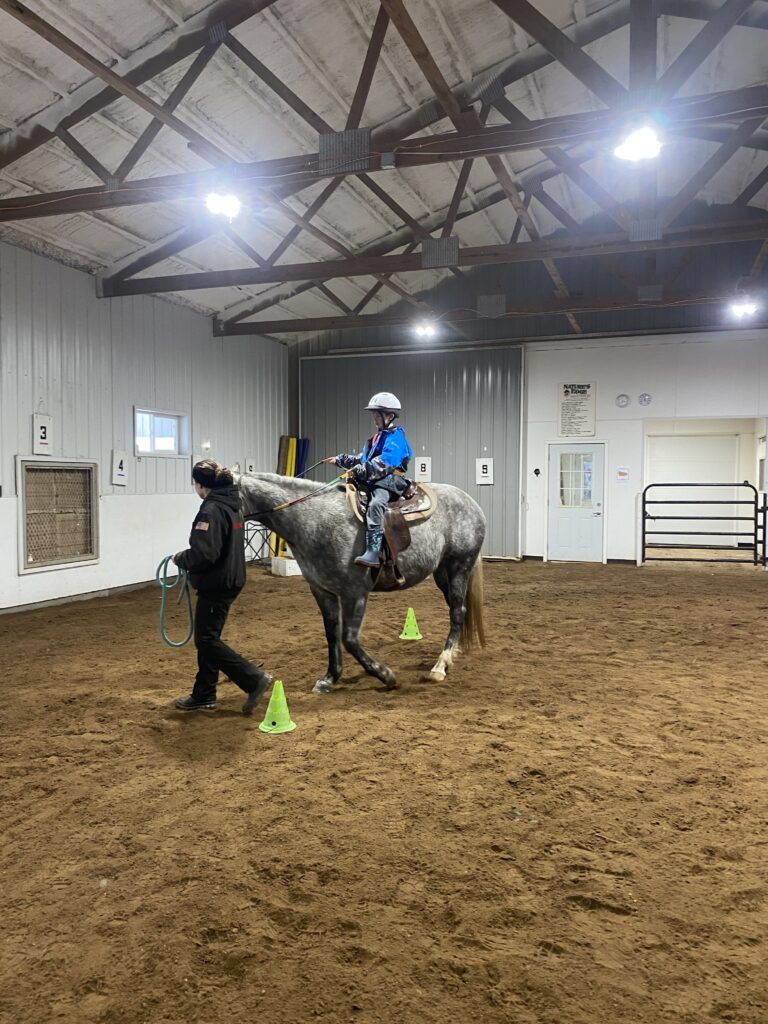
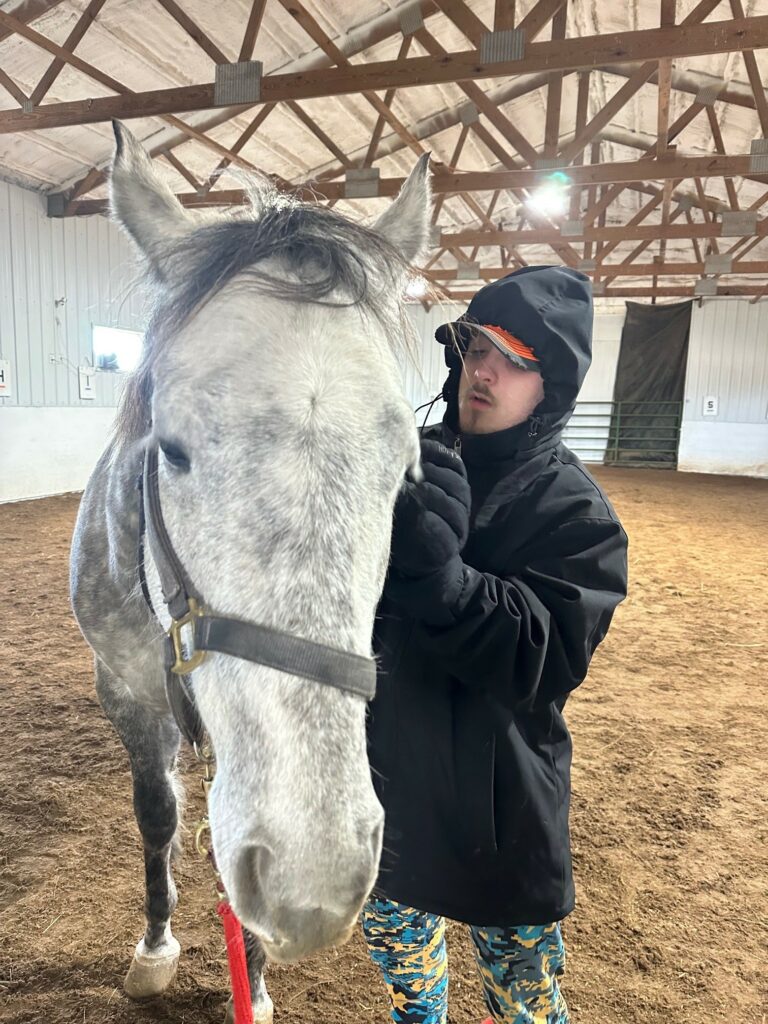
This unique motion cannot be replicated with traditional therapy equipment, such as therapy balls, which typically only address two planes. Nature’s Edge Director Becky Payne explains:
In speech and language therapy, the core of the individual is essential for what happens above the hips – respiration, voicing, motor planning. Hippotherapy activates the trunk in ways that support all those functions.”
Becky Payne, MATCCC/SLP/HPCS/PROMPT, Director and Speech Pathologist, Nature’s Edge Therapy Center, Inc.
Standing equine MRI for a definitive diagnosis
Belle’s calm, rhythmic gait makes her an ideal horse for hippotherapy. Earlier this year however, she began to show signs of lameness. Despite multiple veterinary visits, diagnostics, and months of rest, her condition remained unclear. With X-ray and ultrasound proving inconclusive, a recommendation was made to pursue a standing MRI scan. This unique modality visualises slices through tissue, quickly and with precision. Diagnostic in 90% of lameness cases*, it can detect both bone and soft tissue abnormalities where other modalities may fail.
Keen to have the answers, Becky contacted Hallmarq and their partners at the University of Minnesota’s Leatherdale Equine Center. The two parties worked together to defray the cost of Belle’s standing equine MRI scan.
Thanks to this unique imaging modality – and the expertise of Dr. Ernst and the team at Minnesota – Belle was diagnosed with a deep ligament tear and probable navicular disease. With this clarity, her care team can now provide targeted treatment. This includes recommended stall rest and twice-daily hand walking, to give Belle the best chance of recovery. Becky shared her heartfelt gratitude:
Belle is not just a therapy horse, she’s family. What Hallmarq and the University of Minnesota did for her directly impacts the lives of every patient who works with her. We are beyond thankful for your partnership.”
Hallmarq is proud to support partners like Nature’s Edge who embody the spirit of care, community, and innovation that aligns with our mission statement. We look forward to seeing Belle sound and well and, eventually, back in the arena doing what she does best: helping people heal.
*(Byrne, Marshall, and Voute, 2020)
For information about MRI: University of Minnesota’s Leatherdale Equine Center.
Learn more about Nature’s Edge Therapy Center: naturesedgetherapycenter.org
More on the science of hippotherapy: American Hippotherapy Association
